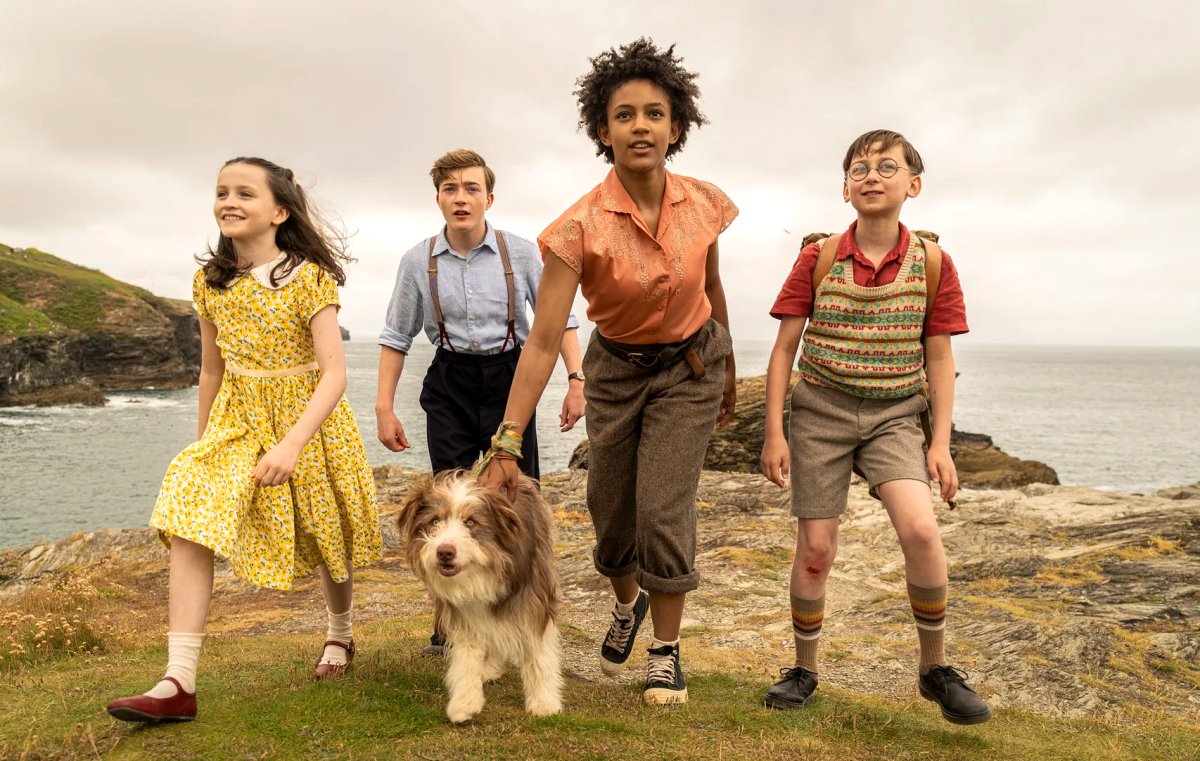BBC’s New ‘Famous Five’ Doesn’t Present George as a Trans Boy, but Maybe It Should Have

Want to see the very worst of Britain on display? Wait until a new adaption of a classic British book series comes out. If any of the main characters are played by a person of color or express thoughts on their gender, the angry gammon will let you know how much they’re upset by it.
Yep, if you believe the Daily Mail readers of the world, the Enid Blyton adventure book series The Famous Five has become some sort of harmful political subversion by … featuring a Black and very slightly gender-non-conforming child. The racism on the British side of Elon Musk’s X platform (formerly Twitter) is appalling.
It’s also mixed in with the lie that the character in question, George (played perfectly by young actress Diaana Babnicova, who I hope goes on to become a huge star), is a trans boy. Their reactions wouldn’t be any more justified if she were, but … she’s just not, making the claims factually inaccurate, to boot. Furthermore, she’s obviously not. All the other characters call her “she” and “her,” but the transphobes of social media have insisted that there’s a scene in the show where George requests to be called “he/him,” and this has had them popping their little heads off in rage. There is no such scene.
George of The Famous Five
The isn’t even the first time the BBC has updated an Enid Blyton property for the twenty-first century. Bear in mind that the books themselves have been updated over the years, too. For example, later editions of The Faraway Tree have characters called Rick and Frannie rather than Dick and Fanny.
In 2020, they presented an adaption of Blyton’s Malory Towers, which is set in a girls’ boarding school in post-war Britain, and that deliberately had an inclusive cast. Now, The Famous Five has followed suit—but it’s been met with much more backlash than its predecessor. The Famous Five franchise is allegedly “beloved” by Brits, but I only see people talk about it to compare it to other modern stories that offend their backwards sensibilities. Funny that.
The BBC’s Famous Five is primarily interested in secret tunnels, hidden tunnels, and adorable dogs before it’s interested in the inner lives of any of its characters. It’s a bit of fun escapism for children, just as the original books were intended to be, and not really much more. (It also features Game of Thrones’ Jack Gleeson in a scenery-chewing role very reminiscent of Joffrey.) But George is the character we see the story unfold around.
George is a tomboy who prefers “George” to her given name of Georgina, wears slightly boyish clothes, and at one point tells a baddie, “I’m not a little girl!” None of this points to a transgender identity, and it’s easy to see here how the intersection of racism and transphobia comes into play here. We see this in the world of sports frequently.
It seems that George—a child—is not feminine enough for the gammon, so they feel that they must assign her a male identity she has not claimed. (“Gammon” is the British word for “white person who is so enraged by inclusivity that they turn bright red while ranting,” by the way.) Once again, appalling.
George’s gender identity
Interestingly, much more is made of George’s gender in the original Famous Five books by Enid Blyton. Blyton was not a progressive in any sense of the word—her books are full of racism and sexism—but it really seems like she accidentally stumbled onto something interesting with George. The books are absolutely packed full of implications that George may be trans.
Here are just some of the “George gender moments” from the original books, published between 1942 and 1962″
“Oh!” said Anne, thinking that her new cousin was most extraordinary. “All right! I don’t care what I call you. George is a nice name, I think. I don’t much like Georgina. Anyway, you look like a boy.”
“Do I really?” said George, the frown leaving her face for a moment. “Mother was awfully cross with me when I cut my hair short. I had hair all round my neck; it was awful.” The two girls stared at one another for a moment. “Don’t you simply hate being a girl?” asked George.
Five on a Treasure Island
“Well, I must say you’ve got a fine boy,” said the American, ruffling George’s short curls. As a
Five Have Plenty of Fun
rule she hated people who did that, but because he mistook her for a boy, she grinned happily!
“Why, if it isn’t Master George!” said the old fellow with a grin. George grinned too. She loved
Five Go Adventuring Again
being called Master instead of Miss.
George was not very pleased at being called a little girl. For one thing she hated to be spoken of
Five Go Adventuring Again
as little, and for another thing she always tried to be a boy.
Everything regarding George’s gender identity in the new BBC Famous Five is actually toned down from the original work. So much for all the transphobes complaining that Blyton would be “turning in her grave” at it.
It all makes me wonder if maybe the BBC should have just thrown caution to the wind and not only included these other instances of George “trying to be a boy” into the show, but actually gone ahead and made the character a trans boy. If the worst people in the country are going to be complaining anyway— because they won’t be happy until the whole television landscape confirms to their racist, transphobic, incredibly boring views—might as well make Blyton spin in her grave rather than just turn.
(featured image: BBC)
Have a tip we should know? [email protected]
